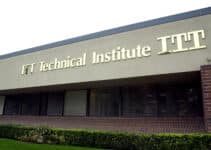The United States Commercial Department recently announced that it has identified 31 regional tech hubs out of 370 applicants.
This announcement marks a significant development in technology innovation, allowing these regions to receive $500 million in federal funding. Notably, the substantial investment aims to enhance innovation in various sectors in the United States.
The U.S. Tech Hubs Funding Support
In a speech, Commerce Secretary Gina Raimondo highlighted this move’s main objective, stating that it will move the United States from relying on already established tech hubs such as Seattle, Boston, and Silicon Valley.
According to Raimondo, these tech ecosystems are connected to just a few locations in the country. As such, they fail to tap into the nation’s creativity and potential and do not possess cutting-edge ideas.
The administration’s move aligns with President Joe Biden’s original vision, which sees the government playing a key role in funding critical sectors to attract private sector investments.
The idea was initially revealed in May 2023 when the Biden-Harris administration introduced the first Regional Technology and Innovation Hubs through the United States Department of Commerce’s Economic Development Administration (EDA).
Meanwhile, the recent approach focuses on key industries like semiconductors, electric vehicle battery production, and clean energy.
This move has drawn the attention of important figures like Lael Brainard, White House National Economic Director, who highlighted the wisdom in the strategic public investments in vital technologies across the entire country. He noted that the broader distribution of resources will foster innovation in every region.
Notably, these newly designated regional tech hubs can be found in various locations such as upstate New York, Puerto Rico, Montana, Nevada, Wisconsin, Vermont, and Illinois. They focus on encompassing semiconductors, critical minerals, clean energy, biotechnology, quantum computing, and artificial intelligence.
Biden Administration’s Diversification Strategy and its Essence
Among these hubs are some with unique areas of concentration. For instance, a hub spanning Washington State and Idaho is dedicated to developing advanced materials for more fuel-efficient next-generation aircraft.
Meanwhile, an Oklahoma-based hub is working towards commercializing autonomous systems in sectors such as agriculture and pipeline inspections, and a program in Wisconsin is striving to advance personalized medicine.
The idea behind the diversification is to decentralize opportunities for individuals without good job prospects, especially those in smaller cities.
However, it’s important to note that being designated as a regional tech hub doesn’t guarantee federal funding. According to Raimondo, the administration plans to award approximately five to ten hubs with up to $75 million each next year.
Congress made This initiative possible, approving $500 million for the program in August 2022 as part of the “Chips and Science” law. This comprehensive legislation allocates $52 billion for U.S. semiconductor production and research to enhance global competitiveness.
President Biden has also requested an additional $4 billion to fund more regional tech hubs, although full-year budget approval for the current economic year is still pending in Congress.
Notably, before these recent investments in the tech hubs, the Biden administration had previously supported the hydrogen industry, as revealed in an October 13 report. This entailed seven hydrogen hubs in 16 states, which received up to $7 billion in funding, indicating their commitment to propel this emerging sector.

